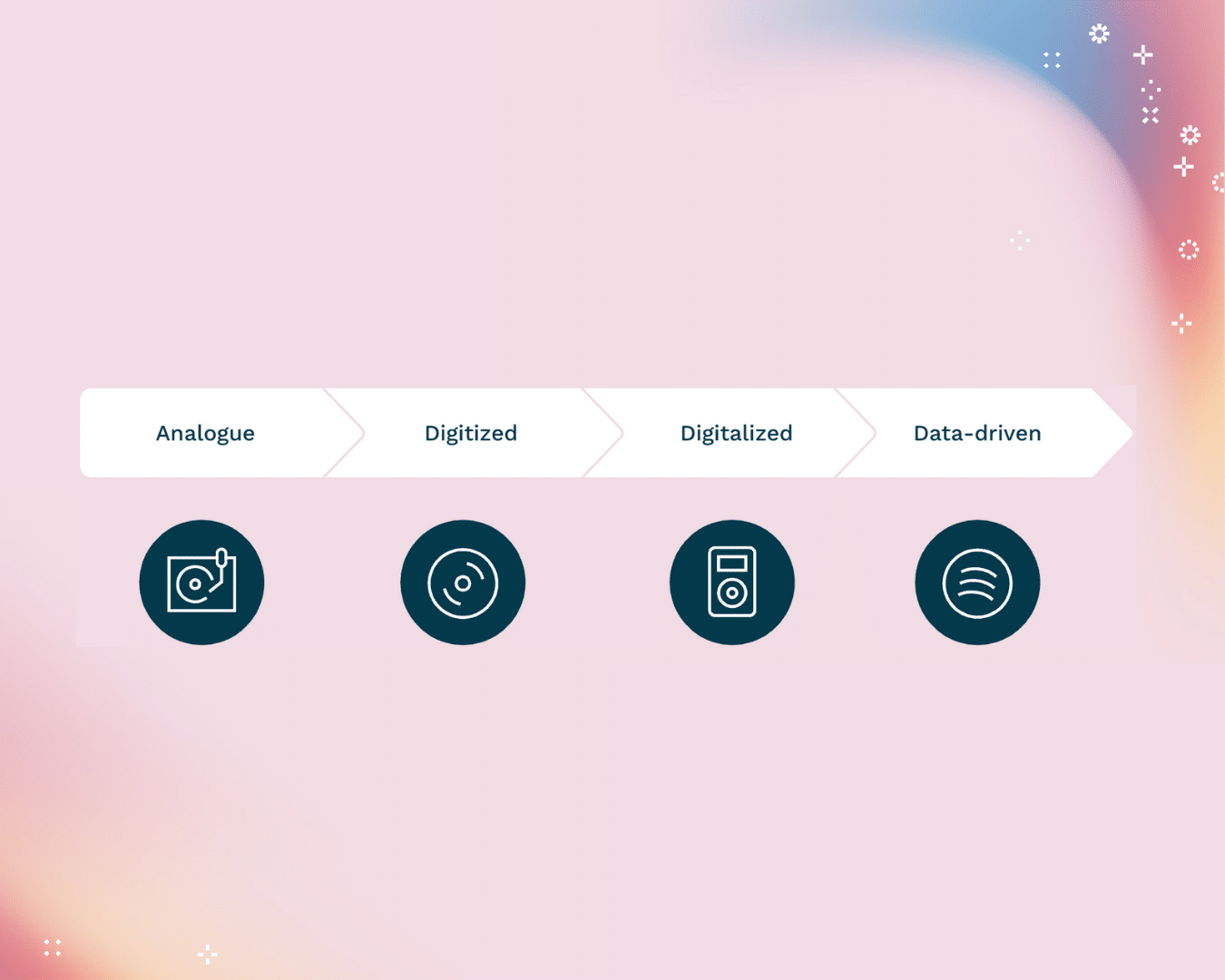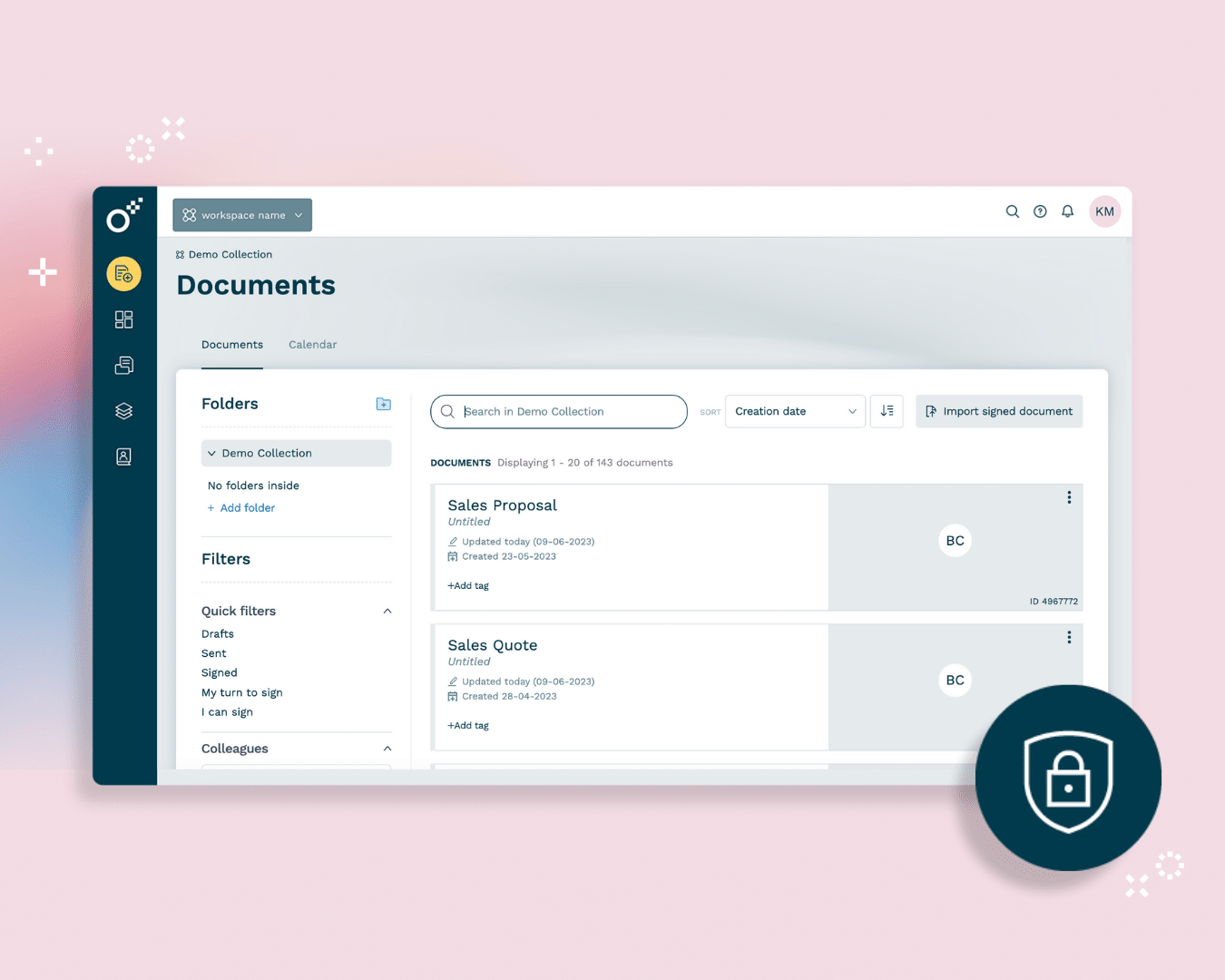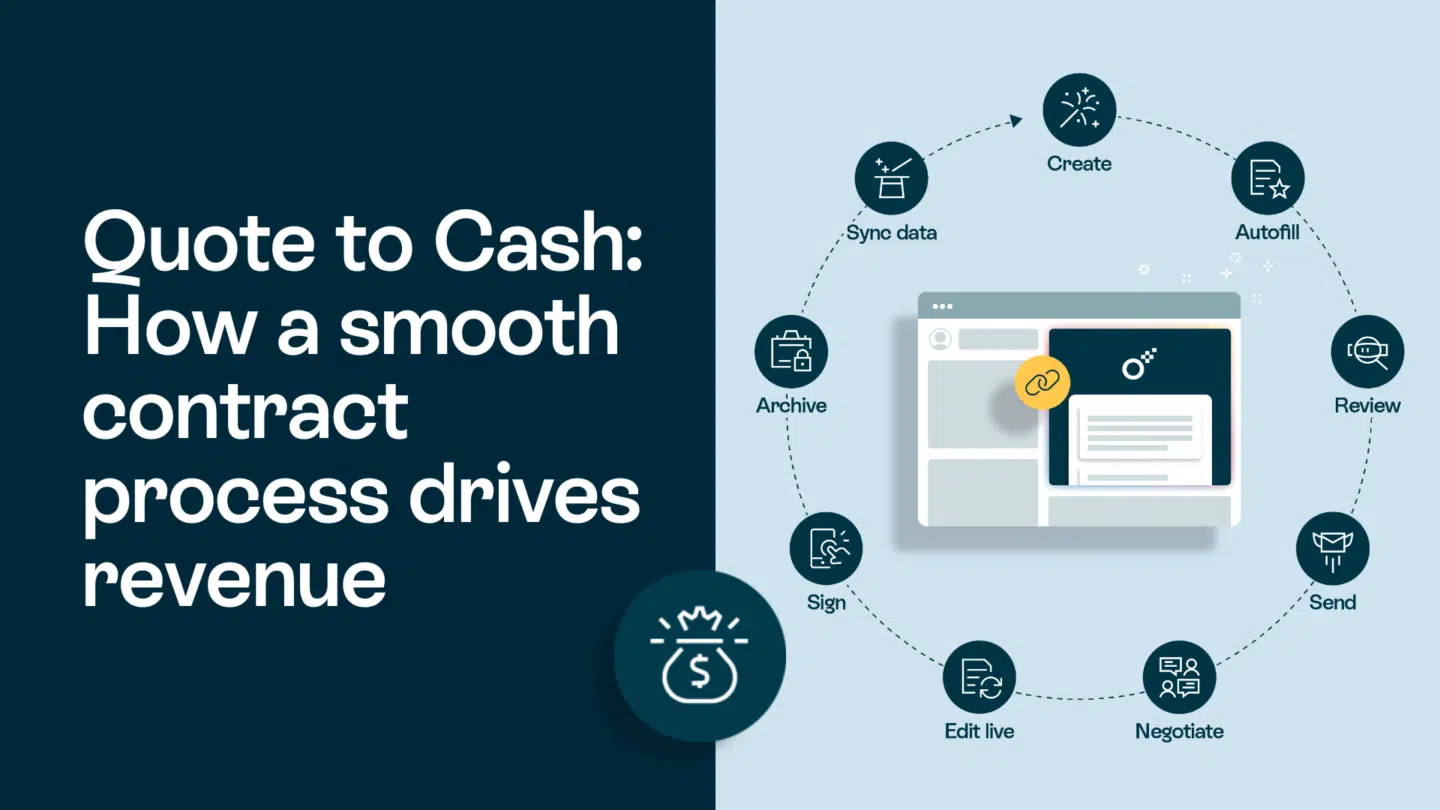What drives change? When you break it down and look at all the historical trends, it could be anything. Sometimes it’s due to political upheaval. Or cultural progression on social issues. Maybe religious attitudes shifted or an external crisis event such as war or a plague. Of course, there are technological advancements and the far-reaching effects they have on society. In the current age that we live in, technology is progressing faster than we can process it. The effects of this progress take time to be properly felt on a large scale. More and more companies want to partake in this digital revolution and leverage it to their advantage as the future of work unfolds. But what are the drivers of digital transformation?
Some consequential people throughout history have made what initially seemed as insignificant drops of water in a pond turn into massive tidal waves of change. The invention of the printing press democratized the power of knowledge, upending the power structure in Europe in the 15th century. Alfred Nobel, the Swedish chemist discovered dynamite in hopes to prevent war but ended up drastically altering the absolute devastation of it. Late-night tinkering in a garage led to the creation of Apple and later smartphones. Now we all have supercomputers in our pockets and operate in a digital world. It is these breakthroughs and technological innovations that caused massive transformations.
Currently, digital transformation is one of the hottest trends in the business world. Companies want to become more digital, even to the point where it becomes redundant. Yet it’s not so much as a “want” to become more digital, it’s a “need” to. But what is digital transformation exactly?
Digital transformation explained
Generally speaking, digital transformation is when a business adopts and implements digital tools to improve its processes and operations. Yet, it can look different for each company that undergoes one as each transformation is unique. At the core though, it’s harnessing a digital tool to make your business operate smoother and deliver a better experience that provides more value to your customers.
That’s the on-paper definition. But there’s more to it than just adding in a few new digital tools to make things run a bit smoother or remove manual labor. It’s also a shift in the mindset and the culture of an organization. According to BCG, to undergo a proper digital transformation is to create a culture that embraces change, experimentation, continual learning, and failure. It’s about becoming more agile and leveraging technology to achieve that status.

Digital transformation is, has been, and will continue to be at the top of mind for businesses. But multiple factors make up a true transformation because it’s not just a “one and done” project and then the transformation is complete. It’s a continual process. Nor is this just a fad or a passing trend. It’s here to stay for the long run. Many CEOs, senior managers, and board members have “become more digital” at the top of their priority list.
This is what Amit Zavery, VP and Head of Platform at Google Cloud has to say about it, “Think of digital transformation less as a technology project to be finished than as a state of perpetual agility, always ready to evolve for whatever customers want next, and you’ll be pointed down the right path.”
There’s the common misconception that a transformation is final. Yet, that completely ignores the entire process of transforming. And it’s just that, a process.
Read also: People, the most important part of your organization
A Brief History of Digital Transformation
We’ve all been witnesses to society’s progression and implementation of digital tools. Though we may not always recognize it when we see it. That’s primarily because it’s looked different as the years have gone by and new technologies have been introduced. Finding a way to improve a process or be more productive and efficient is a core tenet of technological progress. And it’s become a core tenet of business strategy, finding ways to add value in the digital economic landscape that we now operate in.
Updating legacy technology has always been a key part of going digital. Going from storing files on floppy disks to the cloud didn’t exactly happen overnight. But there are snapshots from history that signify society’s digital journey. The iconic picture of Bill Gates from 1994 hanging in the trees next to two massive stacks of paper, holding a CD that could store that much information. That was a small step. Now there are massive data storage warehouses located around the world that enable us to all use cloud computing.
But when it comes to digital transformations, there’s a problem. That problem is what the word “digital” means to different people. If you say digital to one person, it may mean using digital contracts instead of paper. For someone else, it’s shifting to technologies like SaaS and cloud computing. And to another, it means using artificial intelligence or machine learning to train a new algorithm. It all depends on the digital maturity of the person, group, or company.
So, now in the year 2021, there are tons of companies out there that have as their product a tool or solution that speeds up a process and turns it digital. Primarily adding value to a business in some way, shape, or form by transforming some aspect of the way they function. According to Statista, there are at least 15,000 SaaS companies out there. This shows that it’s quite a lucrative business to be in, as many companies want to modernize their processes, become more agile, and have the tools for the future of work.

The five drivers of digital transformation
Transformations are difficult. Especially digital ones. According to a Mckinsey study, only 30% of them succeed. And when it comes to appearance, no two digital transformations look the same. It’s very subjective. Just as each company is different, they all have different goals and objectives for their transformation. Yet each transformation, to be successful has a few characteristics in common. We call these the drivers of transformation.
The drivers of transformation are culture, business processes, and technology. These can be split into five key traits that are shared across transformations that have favorable outcomes. If these factors are deployed then the digital transformation is 80% likely to succeed. So, what are they?
1. A clear integrated strategy, detailing what success looks like with a roadmap on how to accomplish these goals
These goals are typically determined and laid out by the leadership of the company and key stakeholders. They’re the ones who identify what they want to accomplish with their transformation and determine the digital targets. There’s also a roadmap that everyone can use as a guide to navigate through the process and ensure all departments are aligned. Yet, the strategy has to be sure that the transformation truly affects the entire organization, and is not siloed for select departments. It should be consistent with the business’s overall strategy and communicated clearly to everyone.
Read also: Digital transformation trends to keep an eye on in 2022
2. Having the right digital leaders, managers, and talents in the right place
When it comes to organizational change, it’s vitally important to have the right people in the right place. This is especially true for digital transformations. You want to have the savviest people who are knowledgeable of the technology, good at people management, and high performers at the helm. Experience is also a must-have when it comes to this as well. Having a Chief Digital Officer, or a leader or two with a few transformations under their belt will greatly improve the chances of yours working out well. As it’s not their first rodeo so they’ll be able to coach and guide others to not make mistakes they’ve seen before.
This three-pronged approach of applying talent gives your transformation the credibility it needs to be seen as legitimate by the rest of the organization. Blending high performance with exceptional organizational leadership and digital expertise significantly improves the chances of your transformation succeeding.

3. Effective communication on a frequent basis from the top down that secures buy-in and informs of progress
The success of the transformation comes down to everyone involved in the day-to-day work, as well as everyone else in the organization doing their usual jobs. But this requires everyone to take some ownership of the projects. As if they all have some ownership of it, they feel like they took part in it. So having effective communication is key. This starts from the very top of the organization all the way down. Leadership should be committed to the transformation and convey and communicate their confidence in the projects and initiatives to the rest of the company.
This means having regular check-ins, meetings, and updates with the company using traditional and new digital means of communication. Even asking other employees not directly involved with a certain project for their input or perspective. No one should be left in the dark about how it’s going, what it looks like, and what the goals are of the transformation. It’s a company-wide initiative so the company should be a part of it in some manner.
4. Instituting a culture of acceptance of failure and willingness to change
Culture is arguably the most important part of a successful digital transformation. As transformations need to update the mindset of the company and instill new ways of thinking, not only just new technology. Employees and managers alike need to feel comfortable working in new ways, with new tools, and adapting to digitalizing some of their work. This starts of course with the managers and leaders of the project and company. If they show a willingness to change and an agile mindset, then it sets a great example for everyone else to follow. They can’t be afraid to fail, be wrong or make mistakes. It’s about leading from the front and accepting change is a crucial component.
It also empowers your workers to be more active, creative, and think outside of the box. Failure is a part of life, an unfortunate truth that we all have to accept. It pertains to our professional lives too. But we can use those shortcomings as learning opportunities. That’s what having a culture of continual learning, acceptance of failure, and embracing change does to an organization. It opens everyone up to new opportunities and ideas and removes prior limitations.
5. Implementing digital tools and skills for the future
The final driver of transformation is implementing digital tools that will provide a solid foundation for the future. Among these digital tools, a data room plays a pivotal role in streamlining document management and enhancing collaboration. But that also includes upskilling and training your employees to be prepared for what comes up next. They should be trained and have the proper capabilities that align with the goals of the transformation. While a marginal increase in some areas would be hugely beneficial, that enhancement may not stand the test of time. For example, digitizing your archival documents rather than implementing an archival software tool that sorts and tracks those documents. Digitizing is a short-term solution to become “digital,” while the tool actually improves the process and is more transformative. And because digital transformation is a process, not a destination, these changes should have a longer lifetime.
Upskilling and upscaling is an essential driver to ensure the transformative process works out well for the organization. As well as bridging the gap between the old way of working and the new digital way. Having a person act as this link can bring the organizational expertise of managing and the digital savviness of the technology boost both sides of the equation. That way there’s a fulcrum in which people can lean on to support the transformation.

Examples of digital transformation
As much as we all love one size fits all solutions, roadmaps, and easy-to-follow guides and examples, there are multiple ways a digital transformation can go down. None of them are identical but if they have the aforementioned drivers of transformation, then it’s likely they end up positive. But how does a digital transformation appear in practice?
Free yourself from friction
It can take many forms. Especially when you take into account the permutations that can occur in various industries, sectors, and businesses. Some more are simple than others. For example implementing a tool such as Winningtemp, a digital platform that can be used to gauge employee happiness and get a pulse on your organization. There’s also the example of going from paper contracts to using a digital contract management system where the entire process becomes frictionless and smoother. This type of transformation frees up your employees from manual tasks and gives them more time to focus on creative aspects of their job and problem-solving.
Read also: 13 tools for hybrid work you can’t live without
Shopping carts go digital
A more familiar example that we know is going from regular commerce to e-commerce. It’s no secret that the Covid 19 pandemic rapidly upended traditional buying and selling practices. We were forced to shop digitally, as in some places physical stores were closed. According to a Harvard Business Review survey, “Accelerating Transformation for a Post Covid-19 World,” 90% of global executives say that Covid forced their hand to accelerate their digital transformation and sped up their process. So, companies focused on improving their customer’s digital shopping experience and focusing on their delivery services. Launching virtual stores, implementing virtual dressing rooms, and making their products more widely available in the digital ecosphere as well as optimizing their digital touchpoints with their consumers.

The impact of digital transformation
Being more digital, and digital transformation are buzzwords. They get thrown around all willy nilly in meetings and set as targets without actually having any meaning. Even if that is the case in some instances, the impact of digital transformation is much more concrete, if executed correctly that is.
The real-world effects of undergoing the continual process of digital transformation are significant. It gives a basis of digital competence to your business and prepares it for the future. It reinvents the way that you think about solving a problem. No longer are previous constraints considered because that way of limited thinking is removed. It creates new competencies and opportunities within your organization for continual improvement. Adding new skilled workers and upskilling your current employees gives them the capability and know-how to be prepared for the digital work of the future. This could involve becoming certified in agile project management, for example. Same with instituting technology that won’t fade into obsolescence in a few years. Being more agile in the way you work and think lets you leverage the technology to solve more complex problems and tackle new challenges.
Value is what it truly comes down to. When a digital transformation is undertaken it’s to create more value. For the business, the consumer, or society at large. By optimizing processes, increasing agility, and instilling a new mindset and culture, the value produced is a windfall that can be shared.

Trends and the future of digital transformation
It’s self-evident that now is the time to become more digital. It’s also a bit ironic that it took a global crisis to finally force people to get on board with the movement. As 97% of respondents to an HBS survey say transformation success will grow in importance as a competitive factor in their industry in 2021 and beyond. The trends that will sweep us into the next year and define that success is something to keep an eye on. They might look something like this:
- Cyber security
- Hybrid work
- Automation
- Self Service
- Customer centricity
- Digital commerce

There are certainly more trends that will rise, fade and appear as time goes by. It’s always hard to predict the future. Yet it’s easy to predict that digital transformation efforts will continue to be at the forefront of business initiatives moving forward.
Trust the process
As mentioned earlier, a digital transformation is not an end result. It’s a continual process. A new way of thinking, of working and operating. It’s about leveraging digital tools to work more efficiently, smarter, and create more value. So there’s no “final product” or absolute result since it will continually evolve as more advanced tools and tech get introduced to the market. The drivers of transformation will leave their mark in almost every facet of our lives, personal and professional. The digital transformations underway today will have a profound impact on our tomorrow. Getting them correct and making them a success is crucial to ensuring that the work of tomorrow will be done better than it is today.








